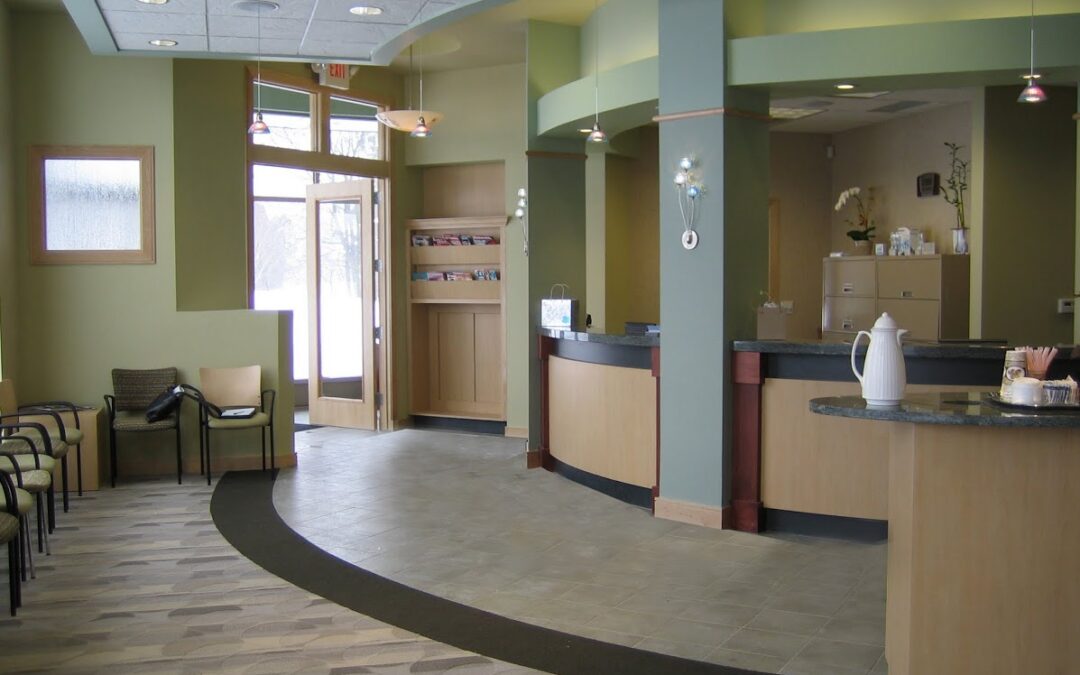Construction for healthcare facilities must be well-thought out and planned, and then executed per the plan. With the advent of COVID-19, it’s even more critical to follow strict guidelines when it comes to construction within an existing healthcare facility.
One way to ensure that construction design adheres to the strict policies and needs of a healthcare environment is the use of an infection control risk assessment (ICRA) at the beginning of a project. These types of assessments started over 50 years ago and have become even more important to deal with the challenges of COVID-19.
COVID-19 is most easily transmitted via air droplets, as well as on surfaces. This means a wide range of precautions and steps need to be taken when it comes to construction within existing healthcare facility.
Interventions to prevent disease transmission may include:
- Barriers, such as plexiglass dividers, at building entry points and at various communication points with patients.
- Air filtration systems that address the airflow in HVAC systems, to capture and eliminate airborne pathogens,
- Isolating/pressurizing specific areas so that untreated air doesn’t mix with clean/treated air.
Health Facilities Management magazine outlines strict protocols for construction design requirements that includes addressing:
- the number, location, and type of airborne infection isolation and protective environment rooms needed
- special HVAC needs
- water and plumbing systems
Other health risks to be addressed during construction include:
- dust and debris (compromising the air quality)
- the circulation of airborne microbes or pathogen through the ventilation system
- water contamination
- waste reservoirs
- dustproof barriers
- the transportation of waste
- contaminated workers
If an ICRA (infection control risk assessment) is created by a healthcare facility, prior to construction work, construction-related requirements need to be specified and included into the contract documents so they can be reviewed, prepared for, and implemented during construction.
Facility protocols outlined by the Facility Guidelines Institute include the following considerations before starting a healthcare construction project:
- Patient placement and relocation plans
- Protection from airborne contaminants and pathogens (protective measures, such as barriers)
- Demolition
- Emergencies (e.g., planned and unplanned utility outages and evacuation).
- Phasing or temporary provisions for construction or modification of HVAC and water systems
- Training for staff, visitors, and construction personnel
- Construction worker procedures and protocols such as:
- construction worker routes
- elevator use (for personnel and materials)
- cleanup and debris
- bathroom and food facility use
CDC Guidelines for the construction industry also include the following protocols:
Wearing cloth face coverings in areas – such as healthcare facilities – where there is significant community-based transmission of COVID-19.
Cleaning and disinfecting frequently touched surfaces, such as shared tools, machines, vehicles and other equipment, as well as handrails, ladders, doorknobs, and portable toilets. Cleaning and disinfecting should occur within shifts as well as:
- at the beginning and end of every shift
- after anyone uses a vehicle, tools, or a workstation
Practicing proper hand hygiene is an important infection control measure for COVID-19. With the appropriate hand hygiene practices, it’s not necessary to wear gloves to protect from COVID-19 infection. When possible, workers should wash their hands regularly with soap and water for at least 20 seconds or use an alcohol-based hand sanitizer containing at least 60% alcohol.
Key times to clean hands include:
- Before and after work shifts and breaks
- After blowing your nose, coughing, or sneezing
- After using the restroom
- Before eating and before and after preparing food
- After touching objects handled by coworkers, such as tools and equipment
- Before putting on and after taking off work gloves
- After putting on, touching, or removing cloth face coverings
- Before putting eye or face protection (safety glasses, goggles, etc.)
Finally, it’s important that construction workers don’t touch their eyes, nose, or mouth at work, if possible. And that they use tissues when coughing, sneezing, or touching their face, with used tissues thrown in the trash and hands washed or sanitized.
In sum, it’s critical that a wide variety of mitigating considerations and procedures take place while doing any construction within a healthcare facility, especially while COVID-19 and its variants are being transmitted in the local area.
Have a question about construction in the healthcare industry? Contact us and let’s talk!
Sources:
https://www.hfmmagazine.com/articles/3867-infection-control-during-construction
https://www.ashe.org/infectionprevention
https://www.cdc.gov/coronavirus/2019-ncov/community/organizations/construction-workers.html

